Table of Contents
Ingredients
Make perfect kofte skewers with these simple ingredients:
- 1 lb (450g) ground beef or lamb (20% fat for juiciness)
- 1/2 cup finely chopped onion
- 2 cloves garlic, minced
- 1 tsp ground cumin
- 1 tsp smoked paprika
- 1/2 tsp salt
- 1/4 tsp black pepper
- 1 tbsp olive oil
- Optional: 1/4 cup breadcrumbs or bulgur wheat for binding
Step-by-Step Instructions
- Prepare the mixture: In a large bowl, combine ground meat, onion, garlic, spices, olive oil, and optional binder. Mix gently until just combined—avoid overmixing to prevent toughness.
- Form the skewers: Divide mixture into 8-10 equal portions. Shape around metal or soaked bamboo skewers (soak bamboo for 30 minutes first). Chill for 30 minutes to hold shape.
- Preheat grill: Heat grill to medium-high (375°F/190°C). Clean grates and oil lightly.
- Grill: Place skewers on grill. Cook 10-15 minutes, rotating every 3-4 minutes for even cooking. Internal temperature should reach 160°F (71°C) for beef or 165°F (74°C) for poultry-based.
- Rest and serve: Let rest 5 minutes before serving with traditional sides like pita bread, hummus, or tzatziki.
| Spice Blend | Key Ingredients | Flavor Profile | Best For |
|---|---|---|---|
| Middle Eastern | Cumin, paprika, oregano, garlic | Earthy, smoky, aromatic | Grilled meats, kebabs |
| Indian | Garam masala, turmeric, cumin | Warm, rich, complex | Spiced meat dishes, curries |
| Italian | Oregano, basil, garlic | Fresh, herby, savory | Meatballs, grilled skewers |
Selecting Quality Ingredients
Choose ingredients wisely for optimal flavor and texture:
- Meat: Opt for 80% lean/20% fat ground beef or lamb—lean cuts dry out during grilling.
- Spices: Use fresh, high-quality spices. Whole spices ground just before use deliver superior flavor.
- Binder: For gluten-free versions, substitute breadcrumbs with rice flour or ground nuts. Chilling the mixture longer (1 hour) helps bind without additives.
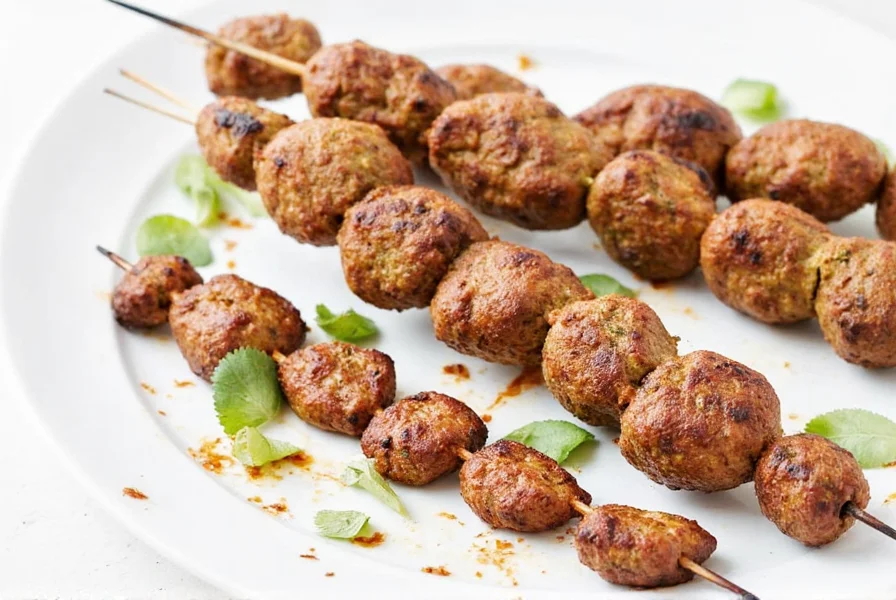
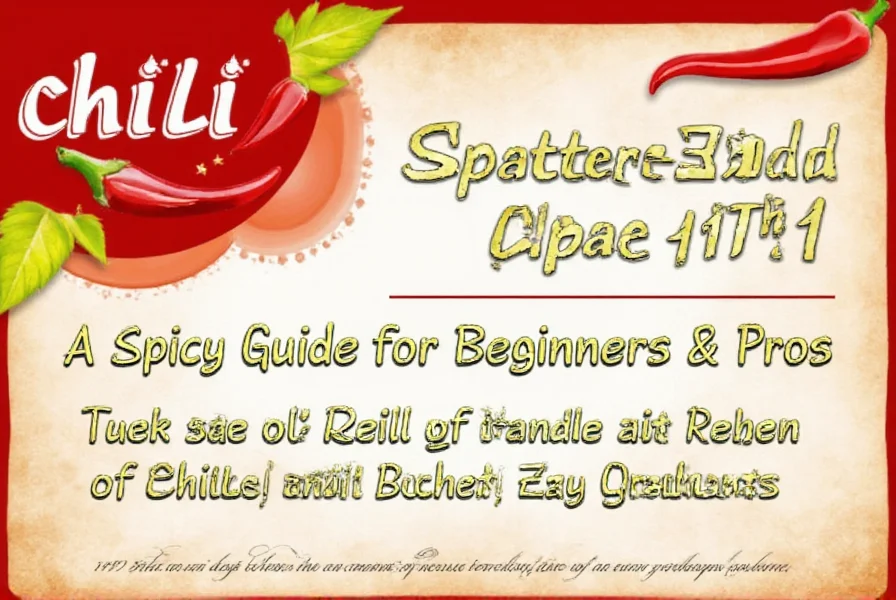
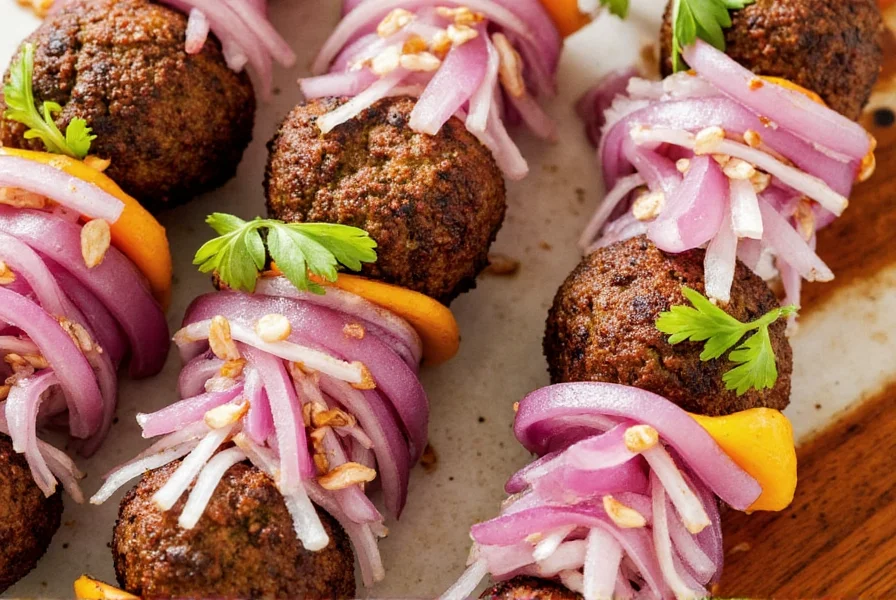
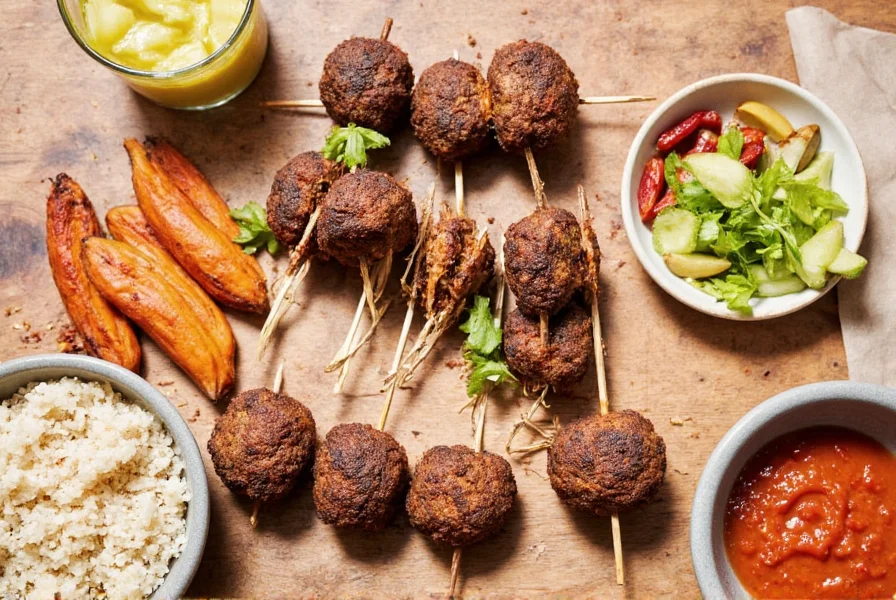

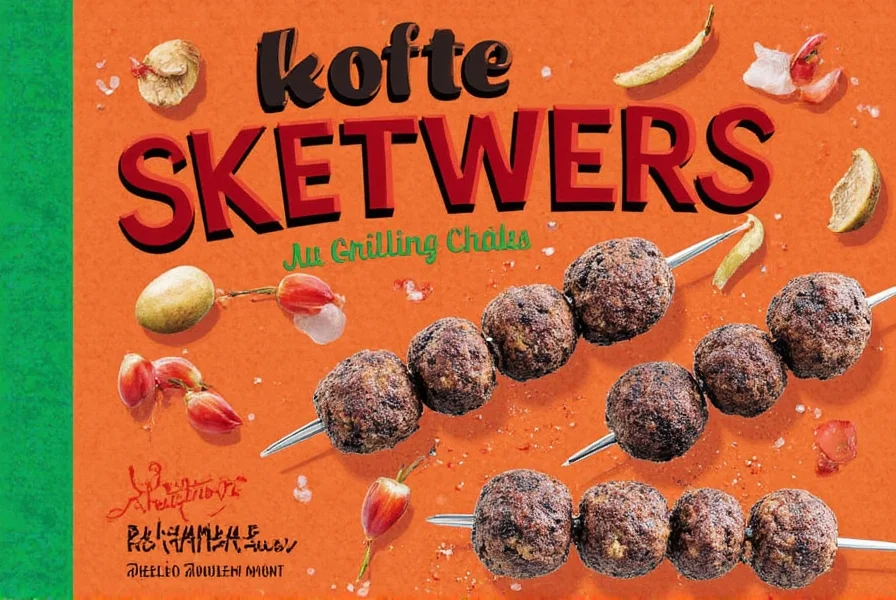

Frequently Asked Questions About Kofte Skewers
What are kofte skewers made of?
Kofte skewers are traditionally made from ground meat (beef or lamb) mixed with spices, herbs, and binders like breadcrumbs or bulgur wheat. The mixture is formed around skewers and grilled.
How do I keep my kofte skewers from falling apart?
Ensure 20% fat content in meat, avoid overmixing, chill formed skewers for 30+ minutes before grilling, and use a binder like breadcrumbs or bulgur for extra hold.
What's the ideal cooking time for kofte skewers?
Grill 10-15 minutes at medium-high heat (375°F/190°C), rotating every 3-4 minutes. Internal temperature must reach 160°F (71°C) for beef or 165°F (74°C) for poultry-based versions.
Can I make kofte skewers ahead of time?
Yes! Form skewers and refrigerate up to 24 hours. For longer storage, freeze uncooked skewers for up to 3 months—thaw in refrigerator before cooking.
What are traditional sides for kofte skewers?
Traditional accompaniments include pita bread, rice pilaf, hummus, tabbouleh, grilled vegetables, and yogurt-based sauces like tzatziki. A simple tomato-cucumber salad also pairs perfectly.
Are kofte skewers gluten-free?
Traditional recipes may contain gluten from breadcrumbs or bulgur. Use gluten-free binders like rice flour or ground nuts, or omit binders entirely (chill longer to bind).
Conclusion
Mastering kofte skewers is simple with the right ingredients and techniques. Focus on meat quality, spice balance, and proper grilling to create juicy, flavorful results every time. Whether for weeknight dinners or gatherings, this versatile dish delivers authentic Middle Eastern taste with minimal effort.










 浙公网安备
33010002000092号
浙公网安备
33010002000092号 浙B2-20120091-4
浙B2-20120091-4